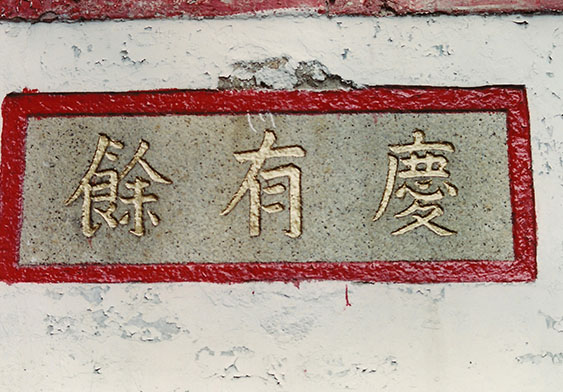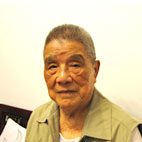
A “Hing Yau Yu” tablet
Before the village was redeveloped in the 18th century, it used to be called “Hing Yau Yu”, eventually becoming renamed “Nga Tsin Wai” during the Jiaqing era (1760-1820)-Photo taken by HKMP Team (2012)
A “Hing Yau Yu” tablet
Before the village was redeveloped in the 18th century, it used to be called “Hing Yau Yu”, eventually becoming renamed “Nga Tsin Wai” during the Jiaqing era (1760-1820)-Photo taken by HKMP Team (2012)
Stories about Nga Tsin Wai and Kowloon City had been passed down for four generations
From his great-grandmother, Ng Sai Ming heard stories about Kowloon City. His great-grandmother, named So, came from So Uk Village, and married Ng’s great-grandfather at the age of 21 – a time when the Kowloon Walled City was being built. The stone used for fortifying the City came from Inverness Hill (the present Kowloon Tsai Park). Both Ng Sai Ming’s mother and grand-aunt had the surname Chan. The two women knew each other very well. The grand-aunt also learnt many stories from Ng Sai Ming’s great-grandmother, which she would share with Ng’s mother in detail. Ng’s mother in turn retold the stories to Ng.
Ng Sai Ming pointed out that the Kowloon Walled City was built 150-160 years ago, but Nga Tsin Wai predated the Walled City. He stressed that the name "Nga Tsin Wai" has nothing to do with the Walled City. Ng Tak Ko Tso bought land from the Chan Brothers in Nga Tsin Long during the era of Emperor Qianlong. "Nga Tsin" already existed then, before the Walled City was even built. Nga Tsin Wai was formerly known as Hing Yau Yu when it was constructed. The Qing Government used to collect taxes for the military at an office behind the village during the era of Emperor Jiaqing, hence the villagers called the place “Koon Ying”. When the New Territories’ villagers were on route to Kowloon, they would see the “Koon Ying” yamen, and in relation to that, they called the village Nga Tsin Wai.


 BACK
BACK  CLOSE
CLOSE 